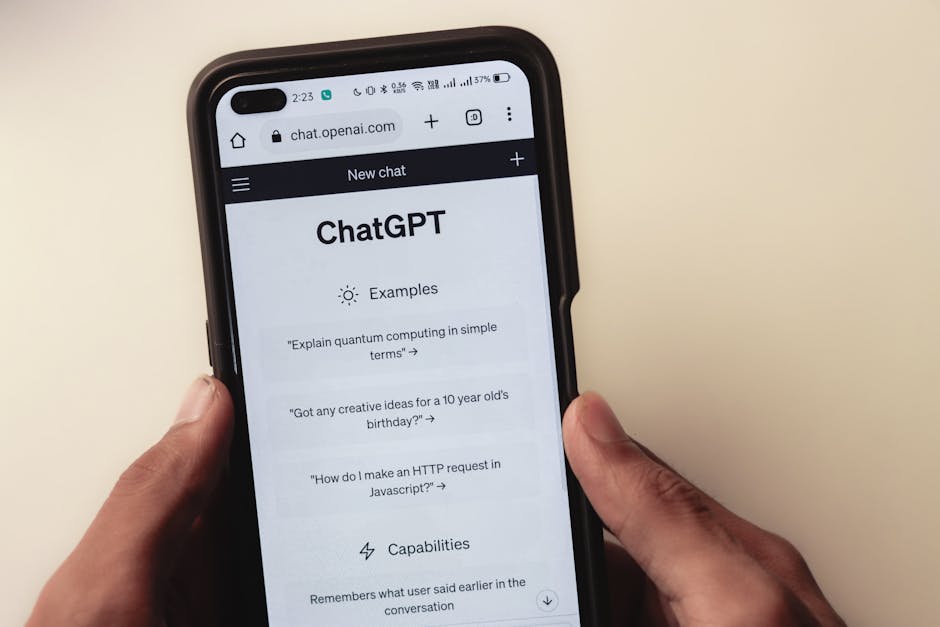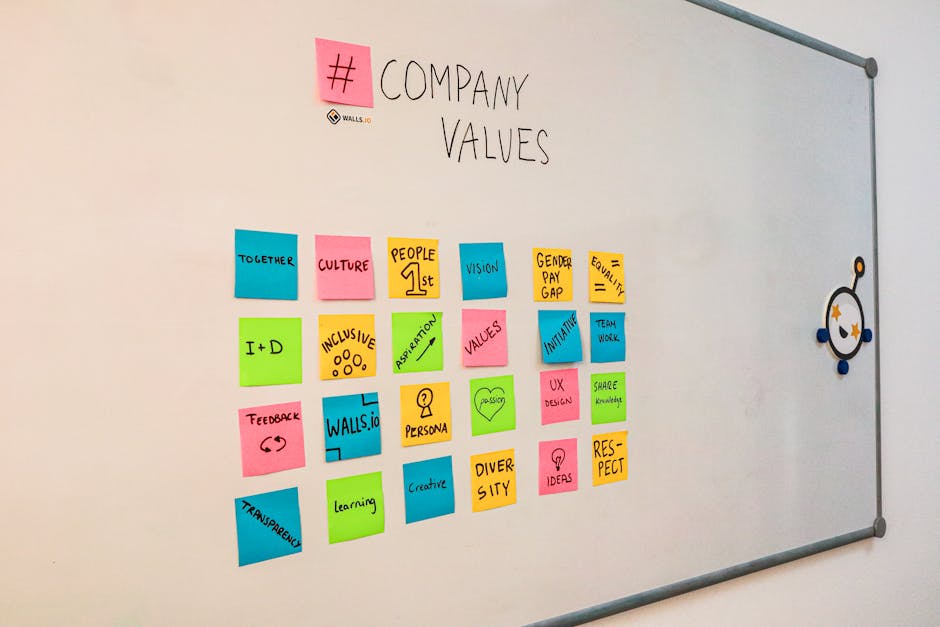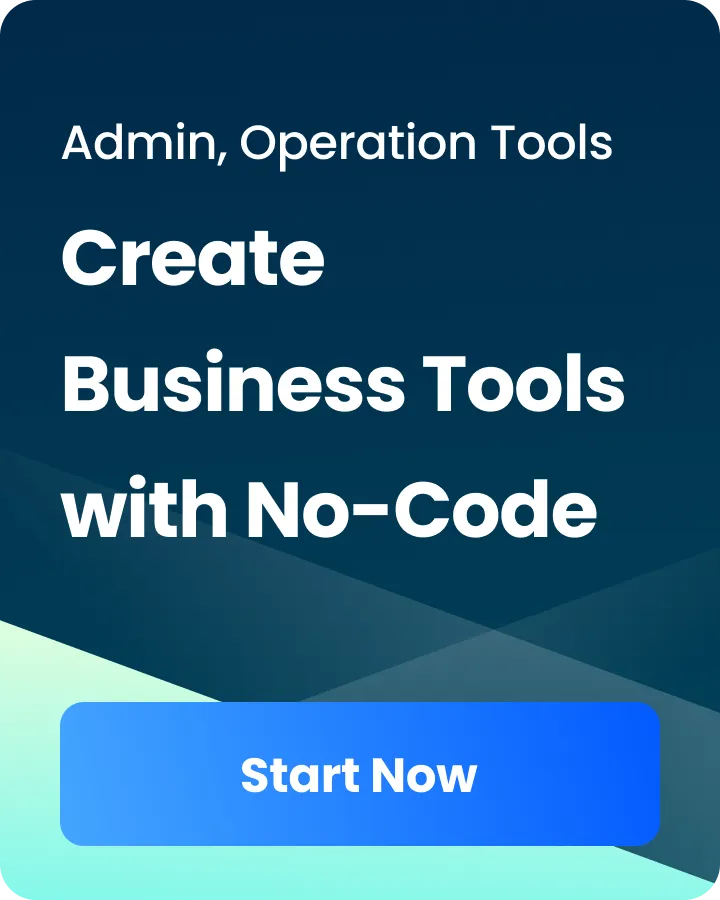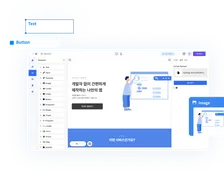Marketing
From Idea to Launch: Build Websites with AI
Waveon Team
10/22/2025
0 min read
blogTocHead

If you’re a small or medium-sized business, a marketing team, or a startup founder, launching a high-quality website quickly can make or break your go-to-market momentum. The good news: AI has transformed how websites are planned, built, and improved—dramatically reducing time, complexity, and cost.
This guide walks you through the complete AI website building process—from preparation and design to launch and ongoing optimization—so you can move from idea to live site with confidence. Along the way, we’ll show how Waveon, an AI Website Builder & Landing Page Generator (no-code), helps you design, write, optimize, and ship faster without sacrificing quality.
Table of contents
Introduction to AI Website Building
What is AI in web development?
Benefits for SMBs
Current trends in AI web tools
Preparing for Your AI-Powered Website
Defining your goals
Gathering resources and content
Choosing the right AI platform
Step-by-Step AI Website Creation
Designing your layout with AI
Generating content and visuals
Integrating functionalities and SEO
Launching your AI-Generated Website
Testing and quality assurance
Go-live checklist
Post-launch optimization
Maximizing AI for Long-Term Success
Updates and maintenance with AI
Analyzing and utilizing AI analytics
Future-proofing your website with AI
FAQs
Conclusion
Get started with Waveon
Introduction to AI Website Building

What is AI in web development?
AI in web development refers to using machine learning and generative models to automate design, content creation, SEO recommendations, component assembly, and ongoing optimization.
Instead of manually crafting every page, AI can:
Propose layouts and section structures based on your goals.
Generate copy, image prompts, and even UI variations.
Suggest SEO improvements, internal links, and metadata.
Automate accessibility checks and performance recommendations.
Learn from analytics to refine content and design over time.
Benefits for SMBs
Faster time to market: Launch new sites and landing pages in days—not weeks.
Lower production costs: Reduce dependency on multiple tools or large teams.
Consistent branding: Apply brand voice, colors, and design rules across pages.
Built-in best practices: Leverage SEO, accessibility, and performance guidance.
Greater agility: Spin up campaign-specific pages, test variations, and iterate quickly.
No-code accessibility: Empower marketers and founders to build without engineering.
Current trends in AI web tools
Generative design and content: AI proposes entire page sections, components, and headlines in your brand voice.
No-code ecosystems: Drag-and-drop editors with smart suggestions and reusable blocks.
AI-assisted SEO: Automated metadata, schema hints, internal link maps, and content optimization prompts.
Personalization: Content variations based on traffic source, behavior, or segment.
Performance-first: Automated image compression, lazy loading, and responsive scaling baked in.
Governance and collaboration: Brand guidelines, role-based workflows, and approvals for larger teams.
Preparing for Your AI-Powered Website

Defining your goals
Before you launch into the AI website building process, clarify what success looks like. Define:
Here’s how that looks in practice as a team aligns on SMART goals and success metrics before building.

Capturing goals visually keeps stakeholders aligned and makes trade-offs easier when you scope pages and CTAs.
Primary objective: Lead generation, e-commerce sales, demo bookings, newsletter signups, or product validation.
Key metrics: Conversion rate, qualified leads per week, average order value, bounce rate, and time on page.
Audience segments: Who are you speaking to (personas, industries, use cases)?
Brand voice and tone: Friendly, authoritative, technical, inspirational?
Conversion pathways: Which pages and CTAs guide visitors to take action?
Content priorities: What’s essential for launch versus a later phase?
Tip: Frame goals as SMART (specific, measurable, achievable, relevant, time-bound). Example: “Generate 100 qualified demo requests in 60 days.”
Gathering resources and content
Collect everything your AI builder needs to produce strong first drafts:
Brand assets: Logo files (SVG/PNG), color palette codes, fonts, icon styles, imagery guidelines.
Messaging: Value proposition, positioning statement, taglines, product benefits, and differentiators.
Content inventory: Existing site copy, brochures, case studies, product docs, FAQs, testimonials.
Visuals: Product screenshots, team photos, brand imagery, or a plan for AI-generated visuals.
Legal and compliance: Privacy policy, cookie policy, terms of service, accessibility commitments.
Technical basics: Domain (or plan to purchase), email setup details, hosting preferences if applicable.
Choosing the right AI platform
Your platform choice determines how quickly you can build and how well the site performs. Compare options using these criteria:
Ease of use: Intuitive editor, clean UI, and learning resources.
AI quality: Strong copy generation, layout suggestions, and tone control.
Design flexibility: Templates plus deep customizations for components and styles.
SEO features: Metadata, sitemaps, structured data helpers, redirects, canonical tags, and image alt text prompts.
Performance: Fast hosting, caching, and image optimization.
Integrations: CRM, email marketing, analytics, payments, scheduling, and chat tools.
Collaboration and governance: Roles, approvals, and versioning.
Security and compliance: SSL, backups, access controls, and privacy support.
Pricing and scalability: Plans that scale with traffic, pages, and team size.
Support: Documentation, chat support, and a helpful community.
Why Waveon
AI-first, no-code builder: Generate layouts, sections, and on-brand copy in minutes.
Landing page generator: Spin up campaign pages with targeted messaging and CTAs fast.
Built-in essentials: SEO guidance, responsive design, image optimization, and hosting.
Integrations: Connect forms, analytics, email tools, and more without code.
Growth-ready: Duplicate pages, iterate variations, and ship experiments at speed.
Bold move, fast results: Open Waveon, upload your logo and brand colors, paste your value proposition, and generate a homepage draft in minutes—publish-ready by the end of your first session.
Step-by-Step AI Website Creation

Quick comparison: Traditional vs AI-first website build
Aspect | Traditional workflow | AI-first with Waveon | Typical impact |
|---|---|---|---|
Time to first draft | 1–2 weeks of wireframes and copy briefs | 30–120 minutes to generate layout and on-brand copy | 5–10x faster start |
Time to launch (3–5 pages) | 3–6 weeks (content, design, build, QA) | 2–7 days (parallelized with AI) | 3–10x faster time-to-market |
Team involvement | Designer, copywriter, developer, SEO | 1–2 marketers; optional SME review | Smaller team, less coordination |
Tool stack | Design tool, CMS, builder, image tools, SEO plugins | Waveon all-in-one (builder, AI copy, SEO, hosting) | Fewer tools, less context switching |
Estimated initial cost | $3k–$15k+ (agency/freelancers/tools) | $0–$200 platform fees + internal time | 60–90% lower cash outlay |
Iteration cadence | Batch updates monthly/quarterly | Continuous; ship variants weekly | Faster learning loops |
SEO setup | Manual metadata, schema, linking | Guided metadata, schema hints, link suggestions | More consistent SEO hygiene |
Performance | Varies by implementation | Built-in optimization and fast hosting | Better Core Web Vitals by default |
Governance/brand consistency | Manual enforcement | Brand kit + AI tone control | More consistent look and voice |
Accessibility | Often addressed late in QA | Prompts and checks during build | Fewer accessibility regressions |
Analytics/insights | Manual analysis | AI-assisted insights and recommendations | Quicker diagnosis and fixes |
Designing your layout with AI
Set up your project
Create your workspace and choose a starter template aligned with your industry or use case (e.g., SaaS, local service, e-commerce).
Configure brand basics: upload logo, set colors, select typography. AI can propose a color palette and typographic scale if you don’t have one.
Define the site architecture
Draft your sitemap: Home, Solutions/Services, Pricing, About, Blog, Contact, Legal pages.
Outline conversion flows: From ad/social to landing page to lead form or checkout.
Let AI propose navigation labels and section orders based on your goals.
Generate page sections
Prompt the AI with your value proposition and audience. Example: “We provide next-day HVAC repair for small businesses. Audience: local SMB owners. Tone: straightforward, trustworthy.”
Let AI propose hero, benefits, proof, features, pricing, FAQ, and CTA sections.
Ask for alternatives: “Give me three hero variants: urgent, cost-saving, and quality-focused.”
As AI drafts sections, you’ll refine the structure in a drag-and-drop editor to arrange the flow and emphasize priority content.

This hands-on pass keeps the narrative tight before you move on to component-level tweaks.
Build along as you read: Paste your value proposition into Waveon and click Generate Sections to get three hero options and a complete page outline tailored to your audience—ready to refine in the editor.
Customize components
Edit headlines and subheads while maintaining concise, benefit-driven messaging.
Swap imagery, add testimonials, and insert trust badges or partner logos.
Ensure accessibility: sufficient color contrast, descriptive alt text, logical heading order.
Pro tip prompts for design
“Create a conversion-focused layout for a free trial SaaS landing page with social proof and a sticky CTA.”
“Suggest three section orders for an enterprise services page prioritizing credibility.”
“Propose a minimalist pricing section with three tiers and monthly/annual toggle.”
Generating content and visuals
Content inputs
Provide a short brief per page: main goal, target reader, and key objections to address.
Add product details: features, outcomes, metrics, and differentiators to guide the AI.
On-page copy generation
Ask AI to draft headlines, subheads, body copy, and CTAs aligned with your tone.
Ensure each page:
Uses a clear H1, descriptive H2s/H3s, and scannable lists.
Addresses problems and outcomes, not just features.
Includes a strong primary CTA and supporting secondary CTAs.
Edit for clarity and specificity. Replace generic claims with proof (e.g., testimonials, case snippets).
Visual assets
Generate hero images and illustrations with prompts reflecting your brand style, or source high-quality stock when needed.
Use consistent art direction: lighting, color palette, and composition.
Optimize assets: compress images, set responsive sizes, and add descriptive alt text.
When you don’t have custom photography, curate on-brand stock as a starting point to maintain visual consistency.

Choose images that reinforce your messaging and tone, then standardize edits so the look stays cohesive across pages.
SEO content foundations
Research intent: What does your audience search for at awareness, consideration, and decision stages?
Place primary keywords naturally in H1, intro, and metadata; include related phrases in H2s/H3s.
Write meta titles (50–60 chars) and descriptions (140–160 chars) that promise value and include the main keyword.
Link internally to relevant pages to create helpful pathways.
Add FAQs with concise answers to capture long-tail queries.
Before diving deeper into SEO tactics, this short explainer from Google shows how crawling, indexing, and ranking work—and why clear site structure and helpful content matter. You’ll learn the basics of how search engines surface pages so your optimizations map to how people actually find you.
Keep these fundamentals in mind as you apply the SEO content foundations above in Waveon—especially when structuring headings, metadata, and internal links.
Pro tip prompts for content
“Write a benefits-first homepage hero headline and subhead for a B2B scheduling tool; tone: confident, concise.”
“Draft three variations of product feature copy using problem > solution > outcome.”
“Suggest a 6-question FAQ for a local service business landing page.”
Integrating functionalities and SEO
Forms and lead capture
Add contact, quote, and demo forms; reduce fields to essentials.
Use inline validation and clear confirmation messages.
Connect forms to your CRM or email tool for follow-up automation.
Before launch, experience your forms the way visitors do—on mobile first—to catch friction and fix it early.

Short, clear forms with instant validation reduce effort and lift conversions from paid, organic, and social traffic.
E-commerce and payments (if applicable)
Enable a simple checkout with guest options.
Clearly display shipping, returns, and support info.
Add trust signals: security badges, reviews, and guarantees.
Scheduling and chat
Embed calendar booking for demos or consultations.
Offer live chat or a chatbot for FAQs and lead qualification.
Performance and accessibility
Optimize images, enable lazy loading, and test Core Web Vitals.
Ensure keyboard navigability, focus states, and ARIA labels where needed.
Keep motion effects subtle and provide reduced motion options.
SEO technicals
Set unique meta titles/descriptions per page.
Generate a sitemap and robots rules; ensure important pages are indexed.
Add canonical tags for duplicated or variant pages.
Use structured data (e.g., Organization, Product, FAQ) to help search engines understand content.
Plan redirects for any migrated pages to preserve SEO equity.
Launching your AI-Generated Website

Testing and quality assurance
Run a pre-launch review so you ship confidently:
Cross-device and browser testing: Desktop, laptop, tablet, and multiple phone sizes; Chrome, Safari, Edge, Firefox.
Content accuracy: Spelling, names, prices, phone numbers, addresses, and links.
Forms and flows: Submit all forms, test email confirmations, and verify CRM entries.
Media checks: Image quality, alt text, captions; video playback and controls.
Performance: Measure load times and interactivity on both Wi-Fi and cellular.
Accessibility: Headings, contrast, tab order, and screen reader basics.
Legal and privacy: Privacy policy, cookie notices, terms, and GDPR/CCPA where applicable.
Analytics and tracking: Ensure your analytics tag and events fire correctly.
Go-live checklist
Domain and DNS
Point your domain to your AI builder’s hosting.
Add and verify SSL; confirm HTTPS redirects.
SEO readiness
Meta titles and descriptions set; no “Lorem ipsum.”
XML sitemap generated and submitted.
Robots.txt allows indexing of important pages.
Canonical URLs set; 404 page customized.
Content and design
H1 present and unique per page; logical heading hierarchy.
CTAs visible and consistent; links tested.
Images compressed and have descriptive alt text.
Integrations
Forms connected to CRM/email; test submissions.
Payment gateway/scheduling/chat integrated and working.
Email sender domains authenticated (SPF/DKIM) if applicable.
Compliance and policies
Privacy policy, cookie banner (if needed), and terms included.
Accessibility baseline checks completed.
Performance
Key pages meet your performance budget on mobile and desktop.
Post-launch optimization
Monitor early traffic: Watch top pages, CTAs, and drop-off points.
Collect qualitative feedback: Ask new customers what persuaded them and what was confusing.
Iterate on copy and design: Use AI to generate variant headlines, hero layouts, or CTA language for quick tests.
Expand content: Add pages for specific use cases, industries, and FAQs based on search queries.
Strengthen internal links: Connect relevant blog posts and pillar pages to key conversion pages.
Keep a release cadence: Ship small improvements weekly; log changes and results.
Speed up your learning loop: Use Waveon to spin up A/B tests on headlines and hero layouts, then apply AI-generated recommendations to ship winning variants—no developer required.
Maximizing AI for Long-Term Success

Updates and maintenance with AI
Content refresh: Ask AI to update older posts and pages to reflect new features, pricing, or customer wins.
Seasonal and campaign pages: Generate and ship landing pages for promotions, events, or regional offers.
Localization: Create language variants with AI translation and tone adjustments; validate with native reviewers.
Design system evolution: Use AI to propose consistent component updates as your brand matures.
Backups and versioning: Keep rollbacks handy; maintain a changelog of edits and launches.
Analyzing and utilizing AI analytics
Funnel insights: Identify where visitors drop off and why; test targeted fixes.
Segment analysis: View performance by traffic source, device, location, or persona.
Content scoring: Pinpoint which pages drive leads and which need optimization.
Anomaly detection: Get alerts when performance deviates from norms.
Recommendation loops: Let AI suggest page improvements, new topics, or internal links based on performance.
Future-proofing your website with AI
Structured data: Maintain accurate schema to support richer search features and evolving search surfaces.
Performance budgets: Keep pages lightweight; establish thresholds for images, scripts, and fonts.
Privacy-first measurement: Rely on server-side tagging or modeled data as needed to protect user privacy.
Experimentation framework: Normalize small, continuous experiments for compounding gains.
Multimodal readiness: Prepare for voice and visual search; write concise, answer-first content and use descriptive alt text.
Documentation: Keep internal SOPs for content updates, approvals, and QA to support team changes and scale.
The AI Website Building Process: A practical blueprint you can copy
Below is a condensed, repeatable workflow you can apply for each new page or site launch:
Strategy and planning
Define the page goal, audience, and the single action you want visitors to take.
List key objections and proof points you must address.
AI-assisted structure
Prompt AI for a section-by-section layout.
Request 2–3 alternative structures to compare.
Content generation
Generate copy for each section in your brand voice.
Add proof: testimonials, case stats, logos, awards.
Visual direction
Ask AI for image ideas or create prompts for illustrations.
Source or produce brand-consistent visuals; compress and add alt text.
Build and integrate
Assemble sections in your builder; ensure responsive behavior.
Connect forms, analytics, and other tools.
SEO pass
Write meta title, meta description, and H1; refine headings and internal links.
Add structured data where relevant.
QA and performance
Test across devices and browsers; verify forms and events.
Improve load times and fix accessibility flags.
Launch and learn
Publish, monitor analytics, and collect feedback.
Iterate with AI-generated variants; repeat.
Waveon for SMBs: Move from idea to launch—fast
AI section and layout generation: Start with smart page structures tailored to your goals.
On-brand content creation: Draft compelling, conversion-focused copy in minutes.
SEO and performance built in: Get proactive recommendations as you build.
No-code integrations: Connect forms, analytics, email tools, and more without developers.
Ready-to-launch hosting: Secure, fast, and reliable—so you can focus on growth.
FAQs
Is an AI website builder good for SEO?
Yes—if it supports fundamentals like clean HTML, fast performance, structured data helpers, metadata editing, internal linking, and image optimization. AI also accelerates content creation and suggests improvements. Always review recommendations and tailor them to your audience.
How long does it take to build a site with AI?
Simple landing pages can go live in a day. A small multi-page site may take a few days to a couple of weeks depending on content readiness, approvals, and integrations.
Do I need coding skills?
No. With a no-code platform like Waveon, you can design layouts, generate content, and publish without writing code. If you have technical skills, you can still fine-tune advanced settings.
Can I migrate my existing website?
Yes. Audit your current site, decide what to keep, and map redirects for old URLs. Rebuild key pages in your AI builder, optimize content and performance, test thoroughly, and then cut over your domain.
How do I handle payments and bookings?
Use the platform’s integrations to add payment gateways for e-commerce or embed scheduling tools for consultations and demos. Keep the flow simple and reassure users with trust badges and clear policies.
What about security and privacy?
Prioritize platforms with SSL, regular backups, access controls, and privacy-friendly analytics options. Publish a clear privacy policy and use cookie consent where required.
What if I don’t have images or a brand kit?
Start with AI-generated visuals or quality stock. As you grow, build a brand kit—colors, fonts, imagery style—and apply it across the site for consistency.
Conclusion

AI changes the website playbook for SMBs: you can plan smarter, build faster, and improve continuously without a large team. The path is straightforward:
Start with clear goals, brand inputs, and a simple architecture.
Let AI generate sections, copy, and visuals—then refine for clarity and proof.
Bake in SEO, accessibility, and performance from the start.
Integrate forms, payments, scheduling, analytics, and chat to complete your funnel.
Launch with a rigorous QA and checklist.
Keep a weekly cadence of small experiments and updates guided by analytics.
With Waveon, you consolidate tools, cut time-to-market, and maintain brand consistency—so you can focus on outcomes: more qualified leads, faster iterations, and a site that gets better every week.
Get started with Waveon
From first concept to live site, the AI website building process helps you move faster without compromising quality. Whether you need a conversion-optimized landing page for campaigns or a full site that evolves with your business, Waveon’s AI Website Builder & Landing Page Generator gives you:
Smart layout generation tailored to your goals
On-brand copy in minutes, not weeks
Built-in SEO and performance guidance
No-code integrations for forms, analytics, and more
Fast, secure hosting and an intuitive editor
Ready to launch faster? Build your next website with Waveon today and turn your idea into a live, high-performing site—without writing a single line of code.
Start free now: Create your first AI-generated page in under 5 minutes with Waveon and go live this week.












